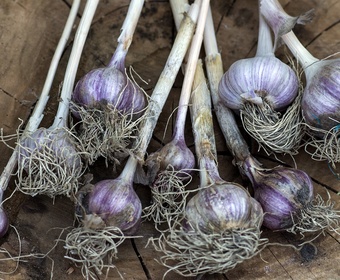
STORING VEGETABLES
- Dark and cool. And not too damp.
- Think “back to the soil”.
- A lot can be rescued with ice water.
- Plan more, shop more frequently.
- Trust your senses.
A fresh vegetable is a living thing that has just had its roots to the soil cut off. Quite simply, it should be eaten as quickly as possible. As a rule, quality is best if the time from soil to table is short, but the lifetime of practically all vegetables can be extended with the right storage method:
Dark and cool
The idea is to get your vegetables to “go dormant”. You do this by reducing the light and heat to a minimum, a bit like going back to life under the soil.
Damp enough
If it is dry, your vegetables will dry out. If it’s too wet, they will go rotten.
Paper bags are amazing. Everything keeps better.
– Per Renhed, F12 and other restaurants, reveals a professional secret
Roots and tubers back to the soil
Root vegetables need to go back to the soil again. In soil in an underground cellar is best. Put potatoes in a bucket and top with soil and the harvest from autumn will keep through to spring – although some might shrink and go moldy. The next step is to cook them.
A lot can be rescued
Remember that even if your vegetables show signs of losing their bounce, a lot can be rescued. A few hours in ice water will perk them up, making them fresh and crisp.
The fridge dries them out
The fridge is a cool, dark place, which is good. The problem is that it’s a bit too cold and – worst of all – too dry. Vegetables can only cope with a short period of being stored in the fridge because they dry out.
The problem with freezing
There are some exceptions but most vegetables lose flavor and character if you freeze them. The problem is that every tiny cell in your vegetables contains large amounts of water and this expands in the cold, exploding them from the inside.
Plan more (throw away less)
Buying vegetables in bulk for the week often leads to nothing other than more waste. Take a tip from the pros: Plan ahead. You can keep a stash of potatoes and onions in the fridge but other vegetables should be bought with a meal in mind, up to three days ahead.
Grow your own
Possibly the best way to choose and store your vegetables is to grow them yourself. You’ll find plenty of advice on the web and there’s no shortage of gardening books either. You don’t need your own farm or a tractor. A south-facing balcony goes a long way.
Shorter storage times
If you’re only storing them for a shorter period of time, it’s often enough to store your vegetables under damp paper or a damp cloth. Look at a professional kitchen just before the dinner briefing, you’ll see lots of boxes full of ingredients protected this way.
Save and store the odds and ends
One week of dinners can result in lots of tops and ends. Don’t chuck them out. Save them in a box and use on pizzas, in pasta sauces, casseroles and gratins and other dishes where the taste is more important than the appearance. It’s good for the environment, for your health and for your pocket.
Don’t trust dates
A label on a packet of vegetables – at least at the moment – has no idea what sort of state the contents are in. See best before dates as just one of several indicators. Trust your nose, your taste buds and your eyes more.


